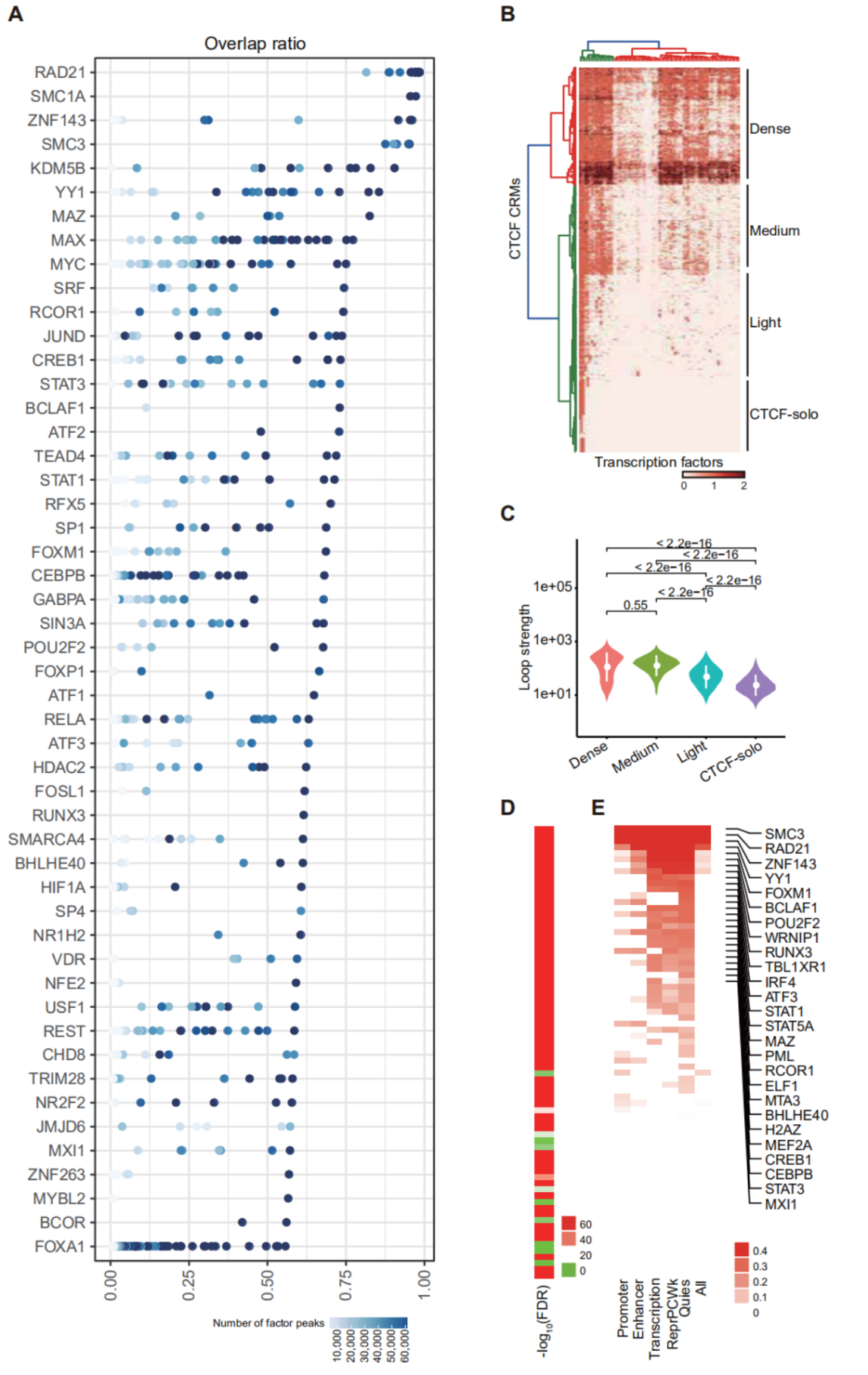Progress in research of CTCF-mediated chromatin loop in Guangzhou Institute of Biomedicine and Health
On September 4, Prof. Yao Hongjie, Guangzhou Institute of Biomedicine and Health (GIBH), Chinese Academy of Sciences (CAS), published their research results in the international academic journal Nucleic Acids Research. CTCF is a critical factor in organizing the 3D genome, however, it does not work alone. However, the partners for CTCF and how they modulate the 3D genome remain poorly explored. In this study, Yao and his team computationally screened the transcription factors (TFs) that co-localize with CTCF, and identified a large number of new TFs with a high overlap with CTCF. They specifically discovered, and validated, the impact of BHLHE40, and found that it can regulate the binding of CTCF, and affect its chromatin interactions.
The genetic material is tightly packaged and folded into the nucleus, and despite being nearly 2 meters in length, is compacted to a size of just a few microns across. The structure of the DNA is hierarchically ordered into at least three levels. Among them, at the upper scale is the three-dimensional structure of chromatin, mediated by special structural proteins (such as Cohesin, CTCF, etc.), which fold chromatin fibers into high-level structures with a distinctive "chromatin loop". Chromatin loops are not only beneficial for the accurate preservation of genetic information, but also mediate the intra-chromosomal and inter-chromosomal interactions, and bring regulatory elements into the vicinity of their target gene, thus regulating gene expression.
In order to identify transcription factors (TFs) that regulate CTCF binding or CTCF-mediated chromatin interactions, yao and his team, identified CTCF co-localization factors by integrating high-quality ChIP-seq data of TFs, and systematically interrogating the TFs that co-localized with CTCF. However, ChIP-seq data of TFs and CTCF are comparable only within the same cell type and the same treatment, but most data do not meet these conditions. Taking advantage of the cell type-independent nature of CTCF binding, they first identified human super conserved CTCF binding sites (hscCTCF binding sites) by integrating a large number of CTCF ChIP-seq data in different cells and tissues. These binding sites exist in most cells and tissues, and can thus be compared to ChIP-seq data for TFs in other cell types. Through this method, they identified a variety of protein factors that highly overlapped with CTCF, such as ZNF143, KDM5B and the subunits RAD21, SMC3 and SMC1A of the Cohesin complex.
Yao’s team further integrated information about CTCF-mediated chromatin interactions and CTCF co-localized factors. It was found that CTCF binding sites with multiple co-localized factors could form stronger chromatin interaction, suggesting that there are factors promoting CTCF-mediated chromatin interactions. Furthermore, by correlation analysis, the team identified several factors that regulate CTCF-mediated chromatin interactions, and experimentally validated the role of BHLHE40 in mediating CTCF mediated chromatin interaction. The method developed by the research team to identify co-localized factors of CTCF is broadly applicable, and provides a rich resource to study the dynamic changes in CTCF-mediated chromatin interactions in cell fate determination.
Prof. Yao is the corresponding author of the paper, and Dr. Hu Gongcheng, doctoral students Dong Xiaotao and Gong Shixin of his research group are joint first authors. The research was supported by Dr. Andrew P. Hutchins, Southern University of science and technology. The research was supported by the National Natural Science Foundation of China, National Key R&D Program of China and Strategic, Priority Research Program of the Chinese Academy of Sciences project of Chinese Academy of Sciences, etc.

Systematic screening of CTCF co-localized TFs and identification of factors regulating CTCF-mediated chromatin interactions
Key words:CTCF, chromatin interaction, BHLHE40
Prof. Yao Hongjie, Ph.D Principal Investigator
Key Laboratory of Regenerative Biology, South China Institute of Stem Cell & Regenerative Medicine, Guangzhou Institutes of Biomedicine and Health, Chinese Academy of Sciences. (http://www.gibh.cas.cn/)
190 Kai Yuan Avenue, Science Park Guangzhou 510530, China
Tel: +86 20 32015279
E-mail: yao hongjie@gibh.ac.cn
Attachment Download:
-
Contact
-
Reference
-
Related Article